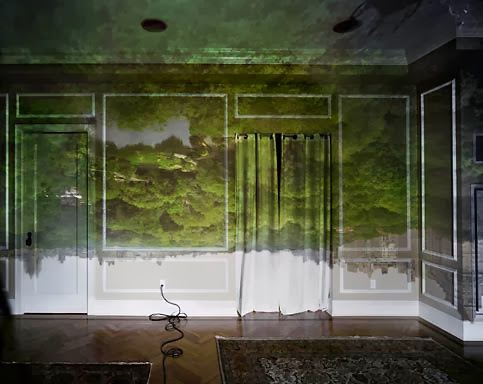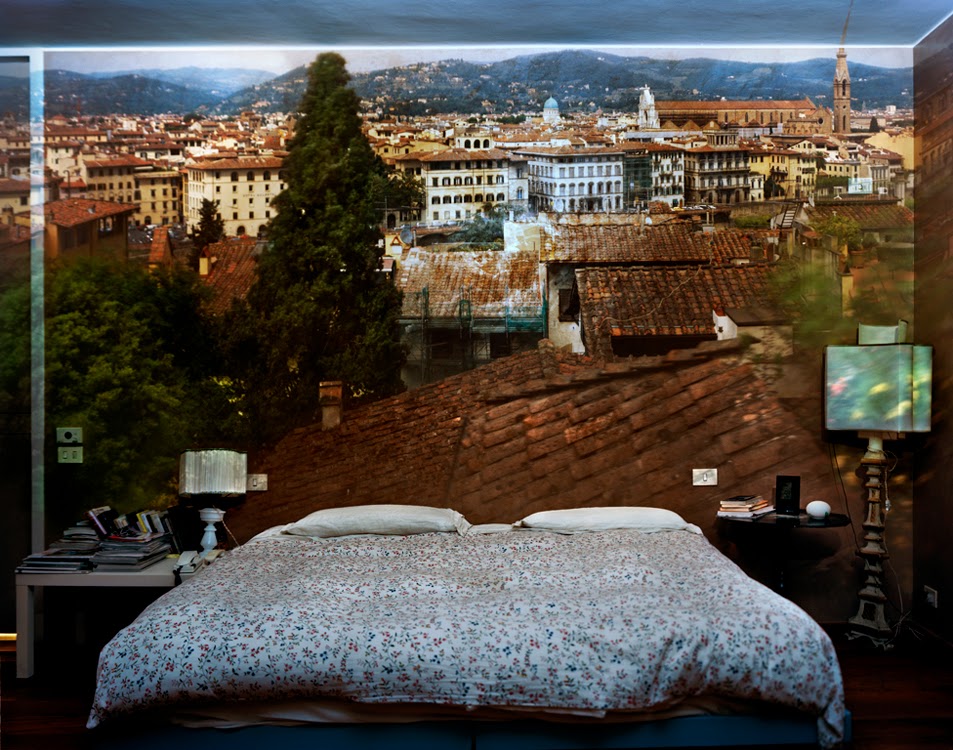View of Central Park Looking North-Summer, 2008
Blurry Upright Camera Obscura: Santa Maria della Salute with Scaffolding in Palazzo Bedroom, 2007
View of the Brooklyn Bridge in Bedroom, 2009
The Pantheon in Hotel Albergo Del Sole al Pantheon, Room # 111, Rome, Italy, 2008
Santa Maria della Salute in Palazzo Bedroom, Venice, Italy, 2006
View of Florence Looking Northwest Inside Bedroom. Italy, 2009
from Leonardo de Vinci's notebook2
With Morell's work I really enjoy the magical quality to the pieces. While the technology is old, it still never fails to impress at it's 'magic'. In some ways it reminds me of why we still go to theatres and enjoy being taken away. Why we hold onto our suspention of disbelief; we still have wonder. This innate sense of wonder coupled with the juxtoposition of the empty room; somewhat desolate or abandoned, like a hotel room far away from home coupled with the astounding images of color and life creates a true sense of awe and enjoyment at images we may have seen many times. Places that are famous but when recreated reignite my sense of joy in their beauty.
From Morell on his own work:
"I made my first picture using camera obscura techniques in my darkened living room in 1991. In setting up a room to make this kind of photograph, I cover all windows with black plastic in order to achieve total darkness. Then, I cut a small hole in the material I use to cover the windows. This opening allows an inverted image of the view outside to flood onto the back walls of the room. Typically then I focused my large-format camera on the incoming image on the wall then make a camera exposure on film. In the beginning, exposures took from five to ten hours.
Over time, this project has taken me from my living room to all sorts of interiors around the world. One of the satisfactions I get from making this imagery comes from my seeing the weird and yet natural marriage of the inside and outside.
A few years ago, in order to push the visual potential of this process, I began to use color film and positioned a lens over the hole in the window plastic in order to add to the overall sharpness and brightness of the incoming image. Now, I often use a prism to make the projection come in right side up. I have also been able to shorten my exposures considerably thanks to digital technology, which in turn makes it possible to capture more momentary light. I love the increased sense of reality that the outdoor has in these new works .The marriage of the outside and the inside is now made up of more equal partners."
See more of Morell's work at http://www.abelardomorell.net/
1.http://brightbytes.com/cosite/what.html
2.http://www.lumen.nu/rekveld/wp/?p=352























